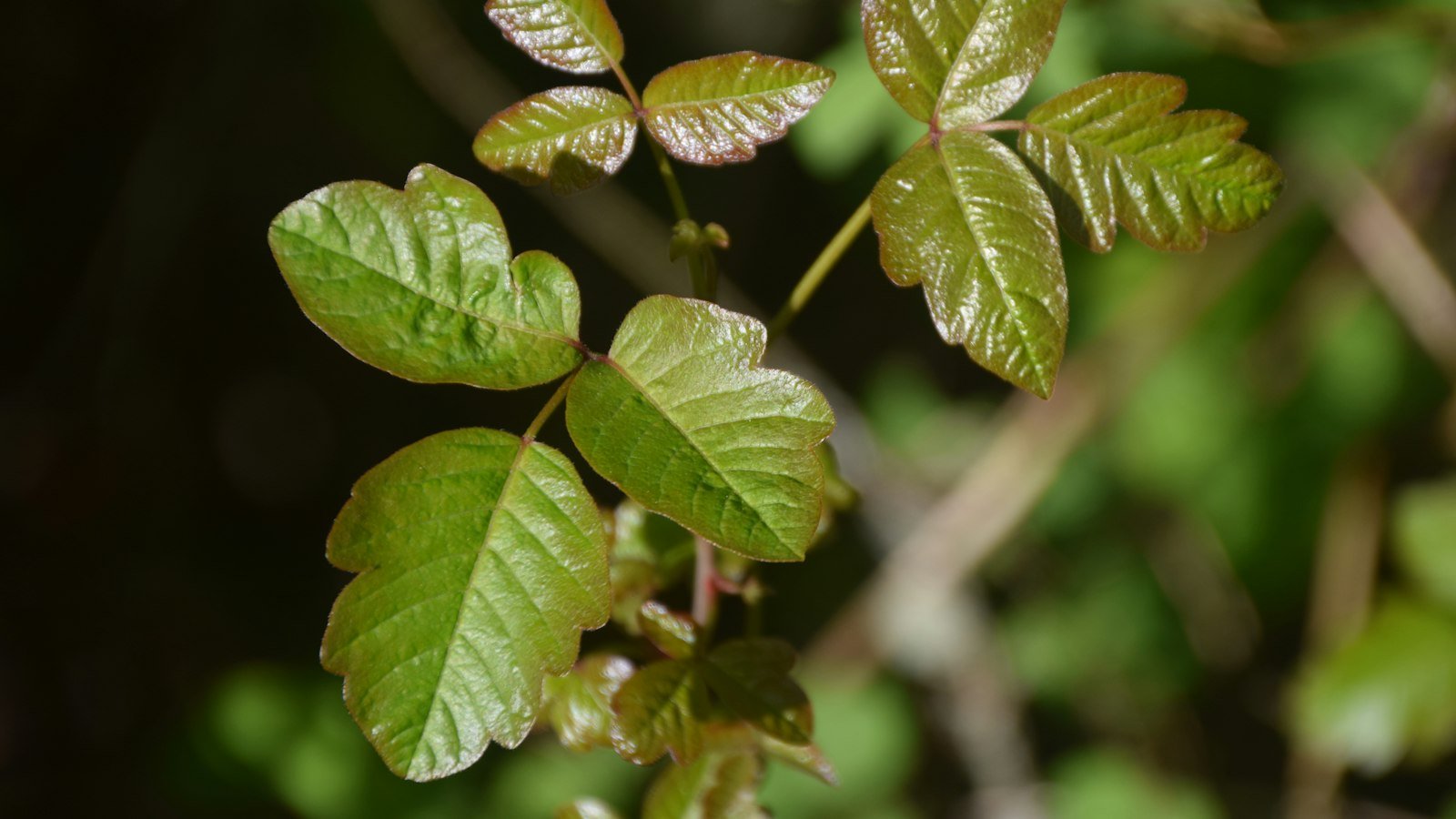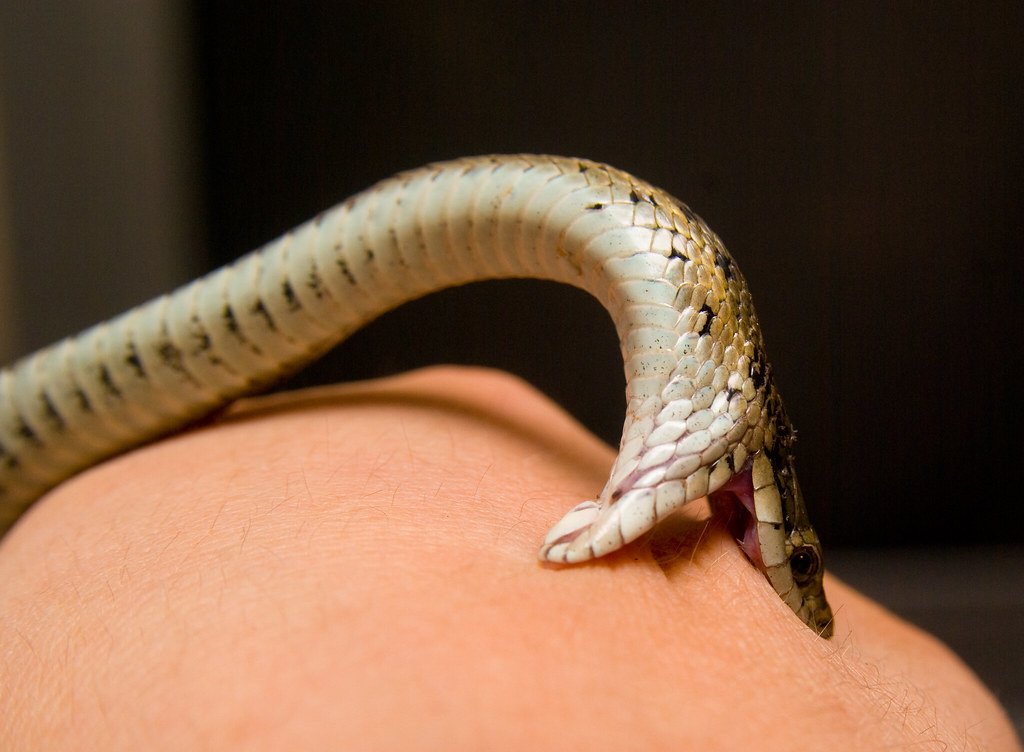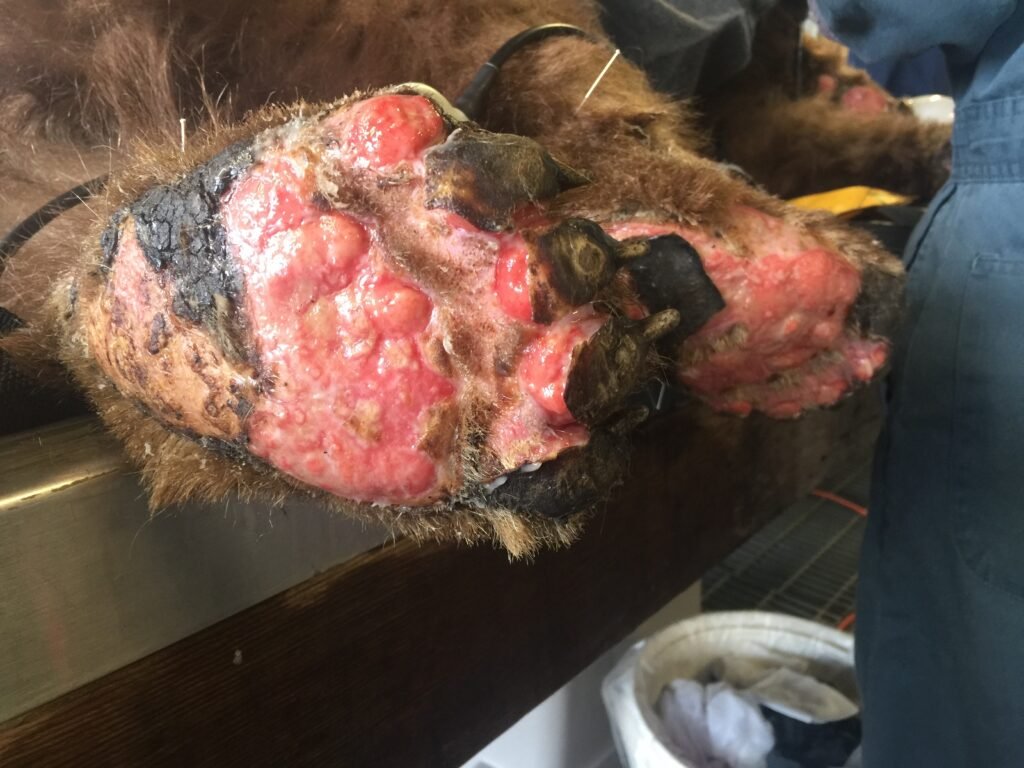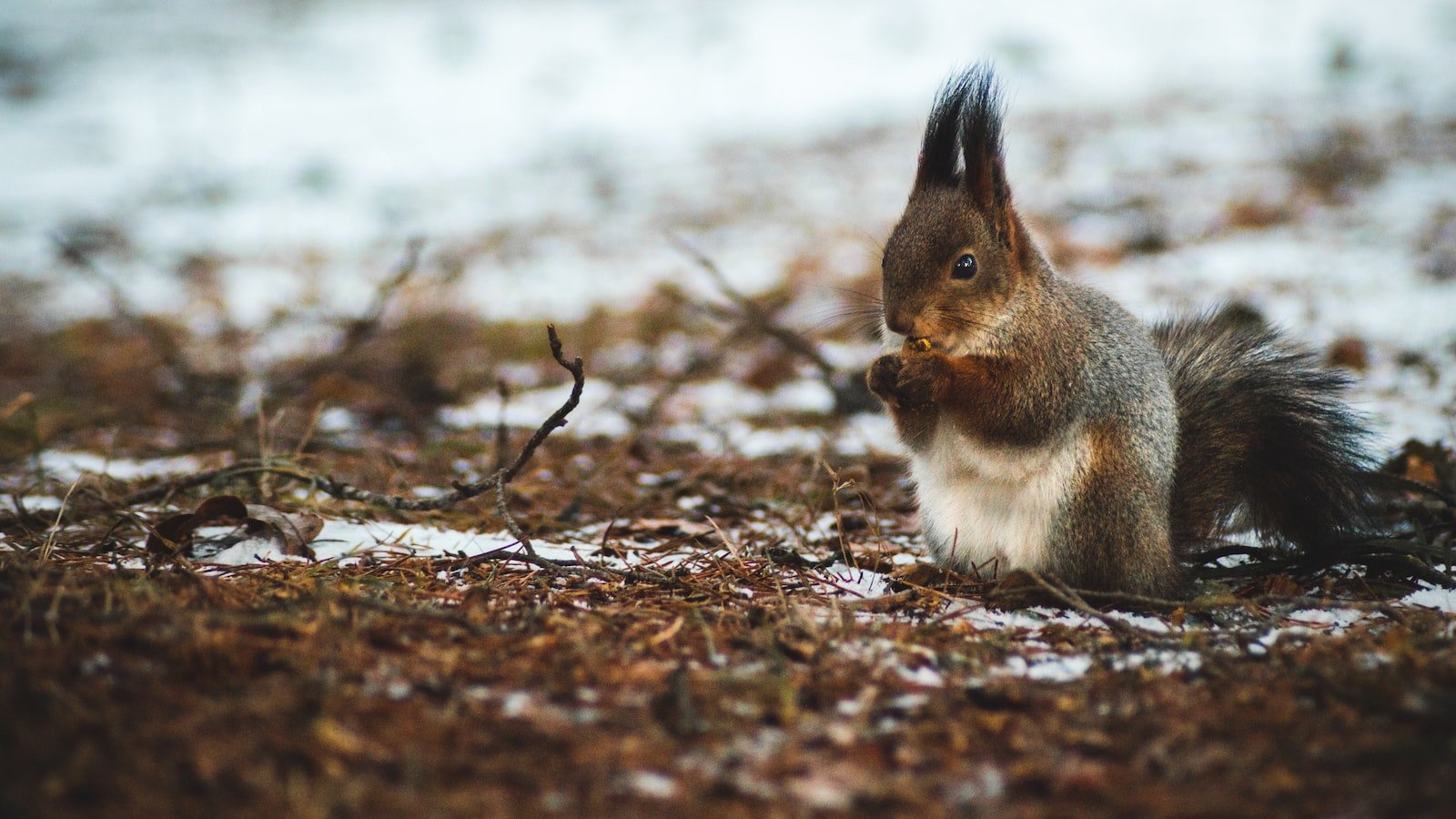Now Reading: The Best Ways to Treat Poison Ivy and Poison Oak
-
01
The Best Ways to Treat Poison Ivy and Poison Oak

The Best Ways to Treat Poison Ivy and Poison Oak
The haunting beauty of the great outdoors isn’t without its perils, and as eager adventurers venture into the wilderness, they may unwittingly stumble upon an unexpected foe: poison ivy and poison oak. These deceptively innocent-looking plants, with their enchanting leaves and alluring shades of green, hold within them a noxious secret that can ruin even the most delightful outdoor excursions. Fear not, intrepid wanderers, for we have curated a comprehensive guide to equip you with the best ways to combat the insidious effects of poison ivy and poison oak. Whether you’ve already fallen victim to their venomous touch or simply wish to arm yourself with knowledge before your next sojourn, read on to discover tried-and-true remedies and preventive measures that will ensure a rash-free exploration amidst nature’s wonders.
Table of Contents
- Understanding Poison Ivy and Poison Oak: Identifying the Plants and Their Effects
- Natural Remedies for Poison Ivy and Poison Oak: Soothing the Itch and Reducing Inflammation
- Over-the-Counter Treatments: Options for Fast Relief and Healing
- Preventing Poison Ivy and Poison Oak: Tips to Minimize Exposure and Reactions
- When to Seek Medical Attention: Signs that Require Professional Help
- Q&A
- To Wrap It Up

Understanding Poison Ivy and Poison Oak: Identifying the Plants and Their Effects
Identifying Poison Ivy and Poison Oak
When it comes to outdoor adventures, it’s important to know how to spot dangerous plants like Poison Ivy and Poison Oak. These two notorious plants may seem innocent at first glance, but a mere brush against their leaves can lead to an itchy and painful encounter. Identifying these plants is key to protecting yourself and enjoying the great outdoors without any unwanted discomfort.
- Poison Ivy (Toxicodendron radicans): This plant is commonly found in North America and is recognized by its clusters of three leaflets. The leaves are usually green in spring and summer, turning red or yellow in the fall. Be cautious, as Poison Ivy can grow as a vine or a shrub, making it adaptable to various environments.
- Poison Oak (Toxicodendron diversilobum): Found in western parts of the United States, Poison Oak has three leaflets just like Poison Ivy, but with a distinctive shape. The leaves resemble oak leaves with scalloped edges. They can range in color from bright green to a reddish tinge during autumn.
The Effects of Poison Ivy and Poison Oak
While some lucky individuals may not experience any reaction to these plants, many unfortunate souls find themselves in a battle against itchy misery. It’s estimated that around 85% of people are allergic to the urushiol oil found in Poison Ivy and Poison Oak. Even a small amount of contact can cause redness, swelling, blisters, and intense itching, usually appearing within 12 to 48 hours.
- Treatment: If you suspect you’ve encountered Poison Ivy or Poison Oak, take swift action. Immediately wash the exposed area with soap and cold water, as warm water can open your pores and allow the oil to penetrate deeper. Avoid scratching the affected area to prevent infection and consider using over-the-counter creams or calamine lotion to relieve itching. If the symptoms worsen or cover a large area of your body, consult a healthcare professional for further treatment.
- Prevention: The best defense is avoiding contact with these villainous plants altogether. Be mindful of your surroundings, especially in wooded areas or near water sources. Wear long sleeves, long pants, closed-toe shoes, and gloves when exploring outdoor environments known to harbor Poison Ivy or Poison Oak. Additionally, washing your clothes and gear after potential exposure can help limit the spread of the irritating oil.

Natural Remedies for Poison Ivy and Poison Oak: Soothing the Itch and Reducing Inflammation
Dealing with the irritating effects of poison ivy and poison oak can be a real nightmare. The relentless itching, redness, and inflammation can drive anyone mad! Fortunately, there are several natural remedies that can provide relief without resorting to harmful chemicals or medications. Here are some effective methods to soothe the itch and reduce inflammation caused by these pesky plants:
1. Cold Compress: Gently place a cold compress or ice pack on the affected area to numb the itch and calm the inflammation. The cold temperature helps to constrict blood vessels, relieving the discomfort and reducing redness.
2. Aloe Vera Gel: Known for its incredible healing properties, aloe vera gel can work wonders on poison ivy and poison oak rashes. Apply a generous amount of pure aloe vera gel directly onto the affected area. Its cooling and moisturizing effects help alleviate itching and promote faster healing.
3. Oatmeal Bath: Soak in a lukewarm bath infused with colloidal oatmeal to soothe your skin and reduce inflammation. Colloidal oatmeal contains anti-inflammatory compounds that provide instant relief from itchiness. Simply grind oatmeal into a fine powder and dissolve it in your bathwater for a calming and healing experience.
With these natural remedies, you can find the much-needed relief you deserve from the discomfort caused by poison ivy and poison oak. Embrace the healing power of nature and bid farewell to the itch and inflammation!

Over-the-Counter Treatments: Options for Fast Relief and Healing
When it comes to finding quick and effective relief for common ailments, over-the-counter treatments are a lifesaver. Whether you’re dealing with a pesky headache, a nasty cold, or an irritating rash, there are a plethora of options available that can help alleviate your symptoms and promote healing.
For headaches, reach for pain relievers like ibuprofen or acetaminophen. These medications work by reducing inflammation and targeting the source of your discomfort. Remember to follow the recommended dosage and seek medical advice if your symptoms persist or worsen.
If you find yourself battling a common cold, over-the-counter cold medicines can provide relief from congestion, coughing, and sore throats. Look for cough suppressants, decongestants, and expectorants, which can help ease your symptoms and speed up the recovery process. Additionally, soothing throat lozenges can help to temporarily alleviate soreness and irritation.
When it comes to promoting the healing of minor cuts, burns, or bruises, the first step is a thorough cleaning. Antibacterial ointments like Neosporin can help prevent infection and facilitate healing. Consider using adhesive bandages or gauze pads to protect the area and keep it clean. Additionally, there are a variety of topical creams and ointments available for soothing the discomfort of rashes, insect bites, or minor skin irritations.
Remember, while over-the-counter treatments can provide fast relief and aid in healing, it’s essential to read and follow the instructions carefully. If your symptoms persist or worsen, it’s always wise to consult with a healthcare professional.
Preventing Poison Ivy and Poison Oak: Tips to Minimize Exposure and Reactions
When it comes to enjoying the great outdoors, nothing can put a damper on your adventures quite like encountering poison ivy or poison oak. These plants can cause an uncomfortable and itchy rash that can last for days or even weeks. To help you stay itch-free, we’ve compiled a list of tips to minimize exposure and reactions:
- Learn to identify the plants: Familiarize yourself with the appearance of poison ivy and poison oak. Remember the saying, “Leaves of three, let them be,” as these plants usually have three leaflets per stem.
- Wear protective clothing: When venturing into areas known to harbor these plants, cover your skin as much as possible. Wear long pants, long sleeves, and closed-toe shoes to limit direct contact.
- Apply a barrier: Before heading out, consider using a barrier cream or lotion that contains bentoquatam. This can create a protective layer on your skin, making it harder for the poisonous oils to penetrate.
- Take a shower as soon as possible: If you suspect you’ve been exposed to poison ivy or poison oak, rinse your skin with cool water and soap within 10-15 minutes of contact. This can help remove any lingering oils and decrease the chance of a reaction.
- Don’t forget your pets: Keep in mind that dogs and cats can also carry the oils from these plants on their fur, potentially transferring them to your skin. After outdoor adventures, give your furry companions a good rinse or consider using pet wipes to minimize any residual oils.
By following these simple tips, you can greatly reduce your risk of coming into contact with poison ivy and poison oak. Remember, prevention is key when it comes to avoiding the itchy aftermath of these troublesome plants!
When to Seek Medical Attention: Signs that Require Professional Help
In certain situations, it is vital to seek immediate medical attention to ensure your health and well-being. Ignoring or underestimating certain signs can have serious consequences. Here are some indications that should prompt you to seek professional help:
- Persistent and severe pain: If you experience intense and prolonged pain that does not respond to over-the-counter pain relievers, it is crucial to consult a medical professional. Persistent pain can indicate underlying issues that require diagnosis and treatment.
- Sudden changes in vision: Any sudden, unexplained changes in your vision, such as blurriness, double vision, or loss of vision in one or both eyes, should not be ignored. Contact an eye doctor or seek emergency care immediately, as it could be a sign of a serious condition.
- Difficulty breathing: If you have trouble breathing, feel short of breath, or experience chest tightness, do not hesitate to seek medical attention. These symptoms may suggest a range of respiratory or cardiac problems that require urgent evaluation.
- Uncontrollable bleeding: If you have sustained a severe injury or are experiencing heavy and uncontrolled bleeding, it is essential to get immediate medical help. Apply pressure to the wound and contact emergency services or visit the nearest emergency room.
Remember, this is just a brief list of indications. It is always better to err on the side of caution when it comes to your health. If you are ever uncertain or concerned about a symptom, consult with a healthcare professional for appropriate advice and assistance.
Q&A
### **What causes the itchy rash associated with poison ivy and poison oak?**
The rash is caused by coming into contact with the oils present in poison ivy and poison oak plants. These oils, called urushiol, can trigger an allergic reaction in most people, leading to the itchy rash.
### **What are some common symptoms of a poison ivy or poison oak rash?**
Common symptoms include redness, swelling, itching, and sometimes the development of blisters. The reaction usually appears within 12-48 hours after contact with the plants.
### **What should I do if I come into contact with poison ivy or poison oak?**
If you suspect contact, wash the affected area with warm soapy water as soon as possible, ideally within the first 10-15 minutes. This can help remove the oils from the skin and minimize the severity of the reaction.
### **Are there any over-the-counter remedies for poison ivy and poison oak rashes?**
Yes, there are a few. Calamine lotion can be applied to alleviate itching, while hydrocortisone creams or gels can help reduce inflammation. Antihistamines may also provide relief from itching and help with sleep.
### **When should I seek medical attention for a poison ivy or poison oak rash?**
You should see a doctor if the rash is severe, covers a large area of your body, or if you experience breathing difficulties, swelling of the face or throat, or fever. Additionally, if the rash does not improve with home remedies within a week, it’s advisable to consult a healthcare professional.
### **What are some commonly prescribed treatments for severe poison ivy or poison oak rashes?**
In severe cases, a doctor may prescribe oral corticosteroids to reduce inflammation and alleviate symptoms. They may also recommend prescription-strength topical creams or ointments to help relieve itching and promote healing.
### **Are there any natural remedies that can help soothe the symptoms of poison ivy and poison oak rashes?**
Some natural remedies that might provide relief include oatmeal baths, cold compresses, aloe vera gel, or witch hazel. However, it’s important to note that these remedies may not work for everyone, so it’s best to consult a healthcare professional for personalized advice.
### **How can I prevent future encounters with poison ivy and poison oak?**
Learn to identify the plants, and avoid contact with them whenever possible. If you know you’ll be in an area with these plants, wear long sleeves, long pants, and gloves. Washing any potentially exposed skin with soap and water promptly after being outdoors can also help prevent a reaction.
To Wrap It Up
In a world filled with towering trees and lush greenery, we often find solace in the embrace of nature. But lurking amidst the beauty lies a treacherous duo, oh-so-deceptive in appearance—poison ivy and poison oak. While they may masquerade as innocent members of the botanical kingdom, their venomous touch can leave us itching and scratching, yearning for relief. Fear not, for in this article, we have embarked on a quest to discover the best ways to quell the wrath of these wicked plants.
Now, armed with knowledge and fortified against the nefarious tricks of poison ivy and poison oak, you possess an arsenal of tried and true treatments. Remember, dear readers, prevention is key, for avoidance eclipses the dire need for cures. But if by chance, destiny tempts you into an encounter with these insidious foes, worry not, for the battle is not lost.
With calamine lotion, the ancient warrior of anti-itch elixirs, you can paint a protective shield upon your skin, rendering each rash a mere whisper of its former self. The soothing embrace of oatmeal baths shall transport you to a world devoid of discomfort, buried beneath mounds of creamy relief. Behold, the power of antihistamines, the valiant knight who defends against the vast armies of itching and swelling, granting you respite from torment.
If nature calls for a more organic approach, rubbing the enchanted jewel of Aloe Vera upon afflicted lands shall bestow upon you the blessings of its succulent miracle. Or seek solace in the enigmatic witch hazel, a potion distilled from the mysterious depths of nature, wielding the potency to heal the wounds inflicted by botanical monsters.
And yet, as we tread upon the paths of treatment, it is crucial to acknowledge the importance of consulting the wise healers of the medical realm. They hold the keys to prescriptions that may turn the tide of battle, granting you liberation from the clutches of these woodland villains.
So, dear reader, armed with knowledge and armed with cures, stand tall. Embrace the great outdoors, for its bountiful beauty far outweighs the fleeting torment of poison ivy and poison oak. But should fate cast you into the heart of their realm, remember these remedies—the guardians of relief and the keepers of peace.
As an affiliate, my content may feature links to products I personally use and recommend. By taking action, like subscribing or making a purchase, you’ll be supporting my work and fueling my taco cravings at the same time. Win-win, right?
Want to read more? Check out our Affiliate Disclosure page.





